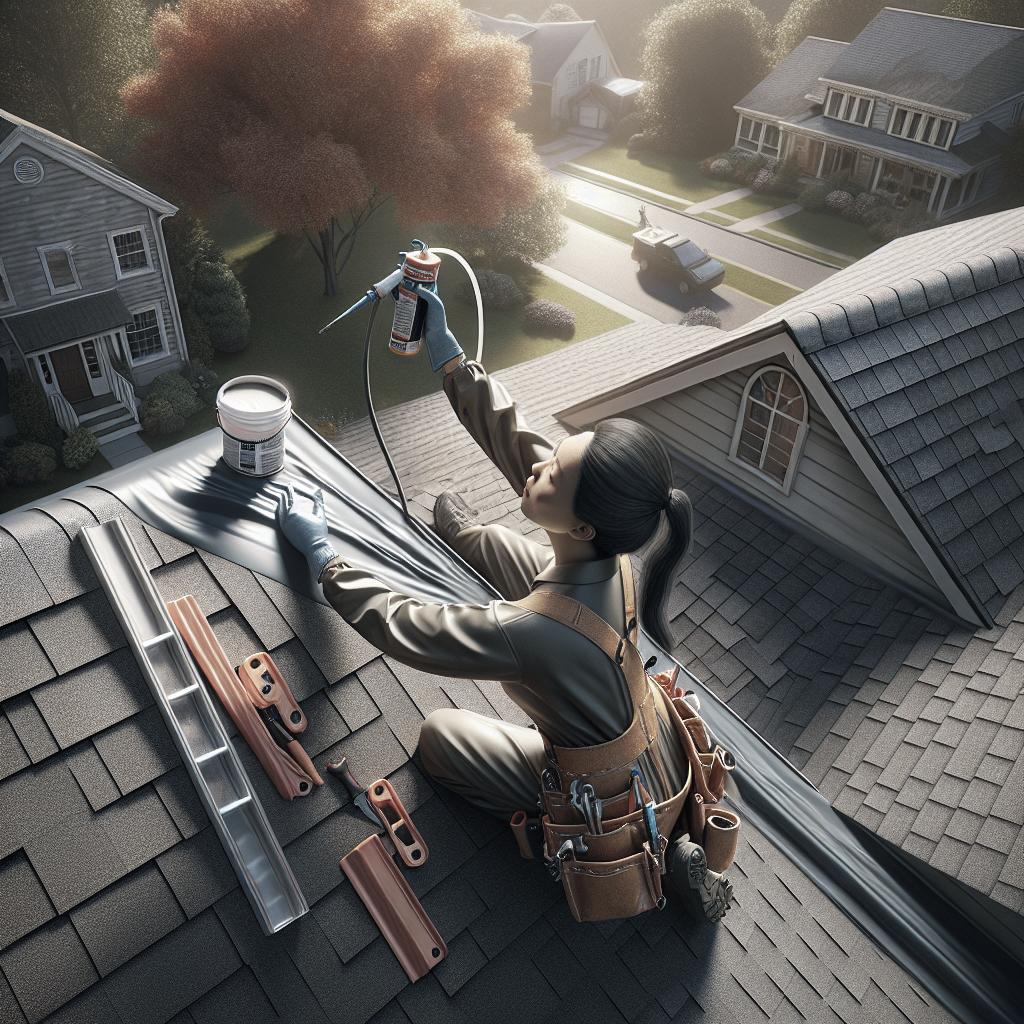“`html
How to Patch a Roof Leak
Roof leaks can cause serious damage to your home if not addressed promptly. From the attic and ceiling to walls and floors, water can find ways to wreak havoc throughout your house. Learning how to find and fix a roof leak is a valuable skill for any homeowner. This guide will help you identify the source of your leak and provide step-by-step instructions on how to repair it. We cover everything from finding the leak, gathering the necessary materials, and fixing different types of roof leaks, including those caused by vent boots, flashing, and flat roof membranes. By understanding these repair methods, you can effectively maintain your roof, avoid potential water damage, and save on costly repairs.
How to Find a Roof Leak
Look for Wet Spots on Sheathing or Rafters
The first step in finding a roof leak involves inspecting your attic. Look for wet spots on the sheathing or rafters. Water typically travels down roofs inside the roof decking before showing itself on ceilings. When you spot any moist areas, trace the trajectory upwards to find the source. Remember, water can sneak in from several feet away due to gravity pulling it downwards.
Another common sign is when the insulation in your attic becomes damp. Use a flashlight to inspect your insulation thoroughly, noting any moisture accumulation or mold growth. These damp spots will help guide you to the leak’s origin. Make sure to address this promptly as mold can lead to significant health problems.
Check for Holes or Tears in the Flashing
Flashing comprises thin metal sheets used around roof projections to prevent water infiltration. Inspect these areas meticulously, looking for any holes, cracks, or tears that could be the source of a leak. Problematic areas often include joints or intersections where roofing materials meet such as chimneys, skylights, or vents.
Use a ladder to access the roof carefully and look for signs of deteriorated flashing, including rust or corrosion. If you notice any such wear, repair the flashing to avoid further damage. Take necessary precautions while on the roof by wearing non-slip footwear and a safety harness if needed.
How to Fix a Roof Leak
Materials Needed
Once you’ve identified the source of your leak, gather the necessary materials. Common items include roofing cement, caulking gun, roofing nails, metal flashing, a putty knife, and a hammer. You might also need a flat-head screwdriver, scissors for cutting metal, and a ladder to reach elevated areas.
Investing in quality materials for repairs will lead to more robust and long-lasting solutions. Additionally, ensure all your safety equipment is in place before starting the repair. A sturdy ladder and protective gloves are essential, alongside checking weather conditions to avoid doing repairs on rainy days onto ensuring a safer working environment.
Fixing Leaks in the Vent Boots
Vent boots are prone to splitting or becoming brittle over time, which can lead to leaks. Begin by checking for cracks in the rubber around the vent. If you notice any defects, you might need to replace the boot entirely. For fixing damaged ones, start by removing any debris and applying a generous layer of roofing cement under the boot’s edges.
Secure the new or repaired boot with roofing nails before sealing around its perimeter with roofing cement. Ensure to overlap flashing pieces and seal seams to block water entry effectively. Vent boot repair can often resolve leak issues, but always verify the leak has stopped post-repair to avoid future problems.
Repairing the Flashing
Damaged or poorly installed flashing often leads to leaking, with the solution typically involving displacement correction or complete replacement. If corrosion is minor, coat the flashing with roofing tar for temporary sealing. However, significant rusting requires cutting a similar-sized piece of metal to replace the faulty one.
Carefully lift the shingles surrounding the damaged flashing to detach it using a pry bar. Replace it with the new piece, secure it with roofing nails, and seal edges with roofing cement. Check for proper overlap and integrity to keep water out. If unsure, consulting a professional roofer can guarantee proper installation.
Flat Roof Membranes
How to Repair a Leak in the Membrane
Flat roofs are distinctive, employing membrane systems that occasionally suffer from punctures or cracks. Identifying leaks involves closely inspecting the roof surface for any visible damage, including bubbles and punctures in the roofing membrane.
For minor leaks, clean the area around the damage, allowing the membrane to dry. Apply a primer if needed and spread a patching adhesive evenly using a brush. Place a compatible piece of membrane over the damaged area and roll it out smoothly to avoid air bubbles. Confirm the patch’s adherence by applying pressure to all sections.
Next Up In Roofing.
Regular roof maintenance is crucial to prevent leaks and extend the lifespan of your roof. Conduct periodic inspections, especially after severe weather, to catch and solve potential problems early. Remember, small leaks can expand into bigger ones if not addressed timely.
As next steps, consider learning more about advanced roofing repair techniques and practices. Whether it’s enhancing your knowledge on sealing diverse roofing types or understanding the benefits of different materials, expanding your skillset will save costs and bolster your home’s defense. Stay tuned for upcoming articles that delve deeper into protective coatings and energy-efficient roofing solutions.
| Subheading | Summary |
|---|---|
| How to Find a Roof Leak | Learn to identify leaks by checking for wet spots and damaged flashing, focusing on attic inspection and roof intersection points. |
| How to Fix a Roof Leak | Details on essential materials and preparation needed to effectively mend a roof, covering safety and quality considerations. |
| Fixing Leaks in the Vent Boots | Troubleshoot vent boot leaks by identifying rubber defects, applying cement, and ensuring reinforced seals to prevent water seepage. |
| Repairing the Flashing | Instructions on correcting or replacing faulty flashing, stressing the significance of correct installation for leak prevention. |
| Flat Roof Membranes | Explore solutions for repairing flat roof membranes, focusing on identifying issues and using adhesive patching for effective sealant. |
| Next Up In Roofing | Encouragement to engage in regular roof inspections and expand knowledge on maintenance and innovative roofing solutions. |
“`


